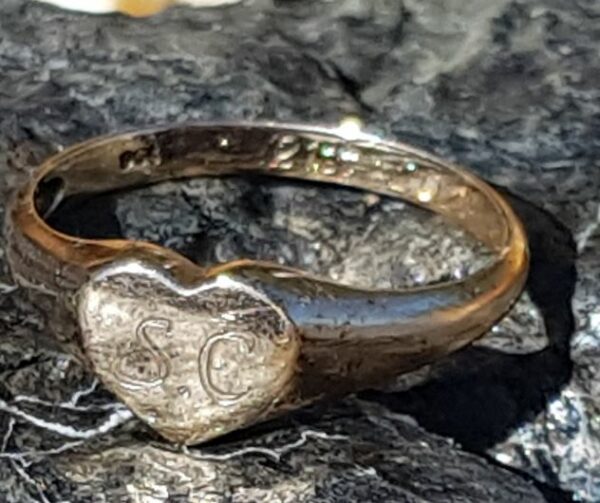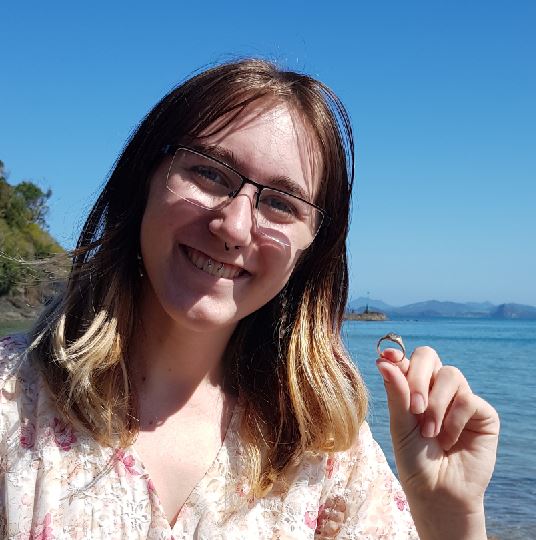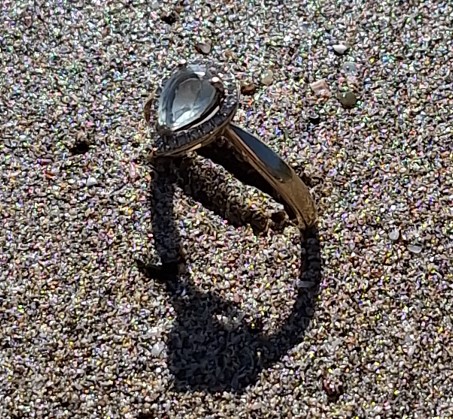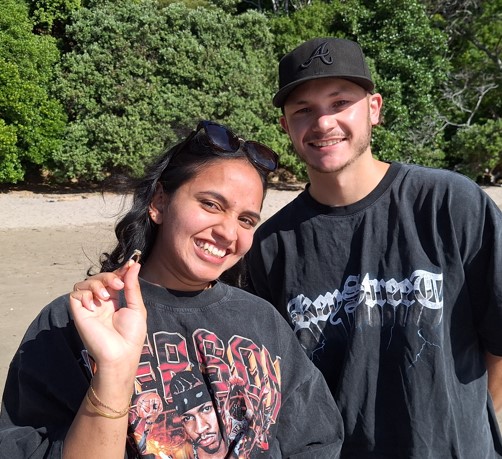It was New Years Eve when Starlia was enjoying a swim at Whangaumu, near Tutukaka in New Zealand. As she stood in the sea, she was idly playing with the small engraved gold signet ring given to her on her 21st – when it slipped off and dropped.
Starlia and friends searched for some hours with masks and snorkels, but had to concede that her gold ring was lost to the sea.
Nearly two weeks later, she came across one of my recovery stories and got in touch. Was a recovery possible, and would I be able to help?
The next day found me walking the narrow track over the headland to the little bay. I wanted to catch the slack tide as the current flowing out from the Ngunguru estuary can be fierce in places. This makes life difficult when you’re trying to stay in place while retrieving a target from deep in the sand. Starlia had mentioned that there were two ‘dog sized’ rocks as a reference point.
As I walked the track that overlooks the bay, I looked down and saw two largish rocks that had been placed under the water about 10m off the beach. « Excellent, they’ve marked where they think they lost it ».
I was soon in the water and started the search around the rocks. A couple of fishing sinkers and a $1 coin that had been in the tide for many years told me that that no metal detectors had been through here since the loss, so the ring was still here – somewhere…
I rolled the rocks over – just in case they had inadvertently placed them ON the ring… Nothing.
Priding myself on an exceptional recovery rate, I could say with certainty the ring was not near the two rocks. Could the sand have built up during the bad weather we had over New Year or through natural sediment shift? I fell back onto my mantra of « Trust no-one. Assume Nothing. Check everything ».
Discounting the cairn, I started to search on the basis of no defined start point and took the grid right out to the edge of the channel dropoff.
In the clear water, I could see the usual sea life swim past. A school of yellow eye mullet momentarily investigated the cloud of sediment I was raising, the steady parade of small Eagle Rays leaving the estuary. Several schools of juvenile Kahawai and even a small Bronze Whaler slid past between me and the beach. The clarity was a pleasant change to the scuba recovery I had completed the previous day in zero visibility! That story will be up in coming days.
I had covered maybe 60% of the bay when Starlia arrived and I waded ashore to meet and greet.
The cairn of rocks wasn’t theirs!
Starlia pointed out two other rocks that I hadn’t yet reached, I felt better knowing the ring hadn’t been missed. Although the tide had now turned and the incoming current was starting to build rapidly. I quickly covered the deeper sections at the drop off before they became unworkable.
More fishing sinkers and rusting bottle caps then deep down, a faint smooth tone, very quiet but consistent. It didn’t have the harshness of a cap, nor the rude raspiness of a fishing sinker, but was it another aluminium can tab?
One scoop…two, the mobile sand and the current was backfilling the hole as fast as I could dig. This is when you can lose a ring beyond range of the machine if not careful as it sinks in the disturbed sands. I refixed the location and went deep, heaving several kilos of sand out of the hole. The hole was now quiet, but was it the ring?
I spread the scoop contents out across the bottom, waved the coil over it and a beautiful pure tone sang out. Only one thing sounds like that!
Rescooped the patch of sand where ‘a’ ring lay and rinsed the scoop – in the corner was a delicate gold signet ring. Job done.
I held it up to Starlia who was watching from the beach. Whoops and yells from Starlia (and another couple who I hadn’t realised were watching).
After the photos and hugs, I started the climb back up the hill.









